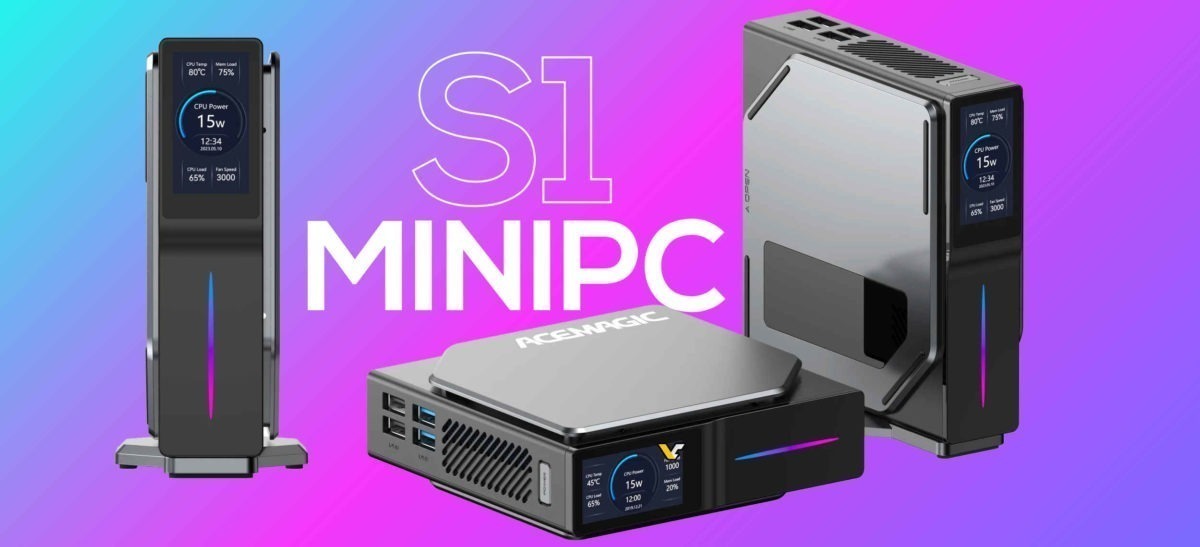ACEMAGIC’s newest compact mini PC offering, the S1, represents an intriguing concept for the mini-PC market. Featuring an integrated LCD display that provides real-time system information like CPU load and fan speed, it aims to offer unmatched insight into the inner workings of your PC.
ACEMAGIC S N95 Alder Lake-N Mini PC with an LCD screen
While built-in screens on GPUs often require clunky proprietary software, it remains unclear if the S1 sidesteps this issue or relies on a background application. With no reviews published yet, the execution of this novel idea remains uncertain.
Under the hood, the S1 packs a modest but capable Intel Alder Lake-N CPU with 4 cores and 4 threads. The N95 operates within a conservative 20W power envelope and maxes out at 3.4GHz. This combination suits network appliance use cases rather than heavy workloads.
On the upgradeability front, the S1’s magnetically detachable side panel grants easy access to two M.2 slots, one NVMe and one SATA. However, the onboard memory remains fixed and cannot be expanded.
For I/O, dual Gigabit Ethernet provides networking flexibility. Video outputs include HDMI 2.0 for up to 4K60Hz output. USB options comprise two USB 3.0 and two USB 2.0 ports. Finally, 3.5mm jacks handle audio in/out.
Pricing kicks off at $269 for the 16GB/1TB config, with shipments commencing October 1st. The 512GB model lacks availability details, while the barebones option also remains mysterious for now. But with compelling pricing and an innovative integrated display, the S1 could become a standout, if its real-world execution delivers on its potential.

